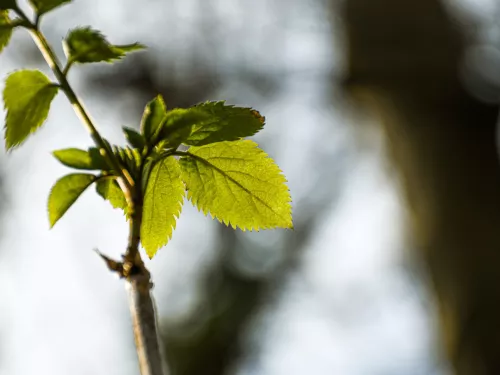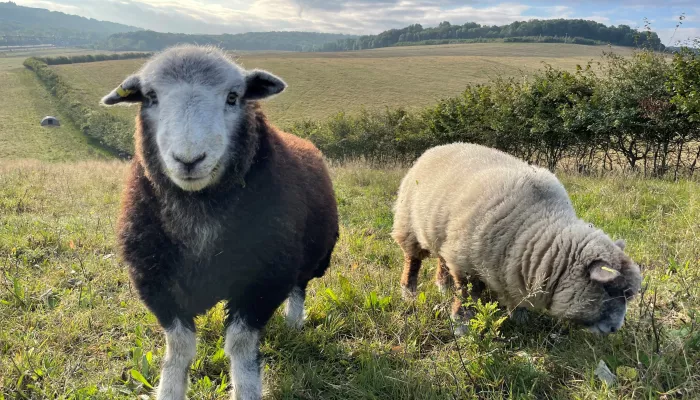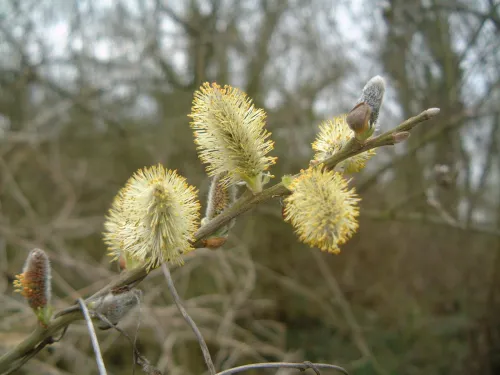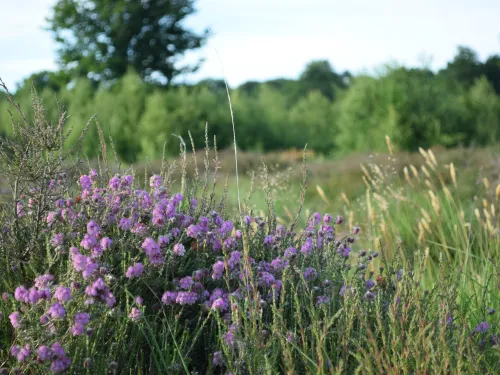
Spring on the wing: April on Hothfield Heathlands
Hothfield Heathlands volunteer & writer, Margery Thomas, explores what the reserve is like at this time of year.

A very exciting sighting in 2017 was a single Shrill Carder bee (left below). This is one of the very rarest bumblebees in the country and is a focus of the ‘Making a buzz for the coast’ project run jointly with the Bumblebee Conservation Trust. Since then another single bee has been seen.
Project officer Rosie Earwaker visited the reserve in July and recorded 10 bumblebee species (there are only 26 in the country!) including another rarity Brown Banded Carder (middle). A number of solitary bee species were also recorded including the Variable Nomad Bee (right), a recent arrival from the continent.
A number of Small Blue butterflies have been seen on the North side of the reserve in the last two summers. These are dependent on Kidney Vetch, a plant in the pea family with yellow flowers, the only food plant of its caterpillars.
Following the expiration of our agreement with local graziers, we are now grazing the fields with our own livestock. At different times of the year, you will see our flocks of sheep, in the spring with lambs, and some of our cattle. Our sheep are Hebrideans and Herdwicks, hardy breeds that are ideal for conservation grazing as they are happy with the coarser vegetation that commercial breeds find unpalatable.

Hothfield Heathlands volunteer & writer, Margery Thomas, explores what the reserve is like at this time of year.

Long-time volunteer, Margery Thomas, tells all about March on our Hothfield Heathland reserve!

Ashford Area Warden Will Glasson reflects on his first full year working across the local sites in this blog, co-written with long-time volunteer Margery Thomas.